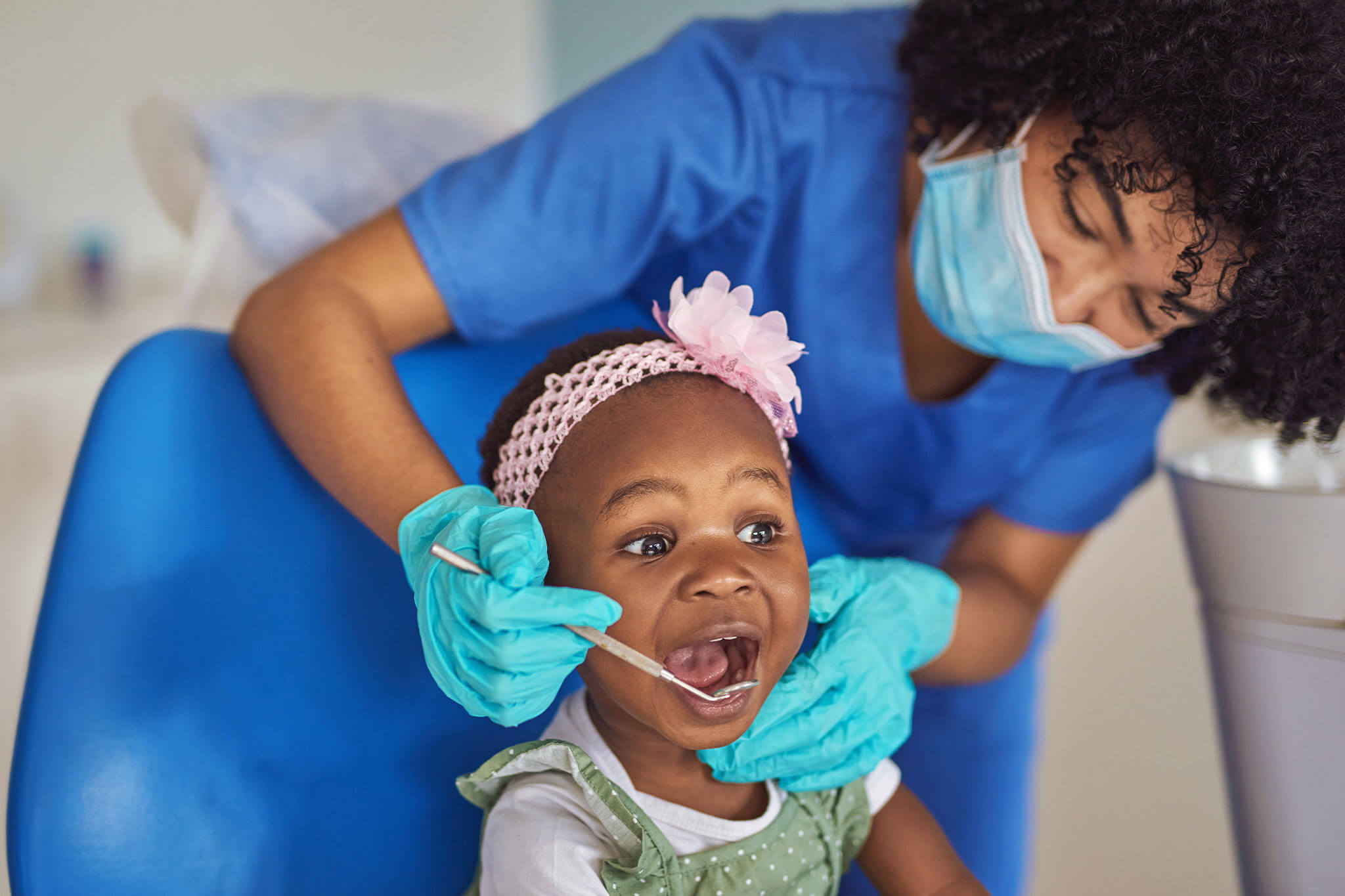
Caring for your child’s healthy smile
A healthy mouth is a key to good overall health. It’s never too soon to start caring for your child’s teeth to ensure a healthy mouth and a happy smile. Parents often have questions about oral hygiene for babies and young children: Should I brush my baby’s teeth? When does my child need to see a dentist? What happens if my child gets a cavity or loses a tooth? We’ve put together some child dental care tips to get you started.
Caring for your baby’s mouth
Good dental care starts even before your baby’s first teeth appear. To rid the mouth of bacteria and sugars that can lead to cavities, the Centers for Disease Control and Prevention’s Division of Oral Health recommends that you wipe your baby’s gums after the first feeding in the morning and again right before bed.
Most babies get their first teeth sometime between the ages of six months and one year. During teething, you can massage your baby’s gums, or offer a solid teething ring or clean, cold, or frozen washcloth.
Once your baby’s first tooth appears, you can start brushing to remove plaque and bacteria that can lead to tooth decay. Use a small, soft brush designed for infants and wet it with water. When your baby has two teeth that touch, you can start gently flossing between them.
Your baby’s first visit to the dentist.
The American Academy of Pediatric Dentistry (AAPD) recommends a first check-up with a pediatric dentist when your baby’s first tooth appears, or no later than your baby’s first birthday. At that visit, you may want to ask when your dentist feels it is OK to start using toothpaste. You might also ask about using fluoride—a mineral that strengthens tooth enamel and can prevent cavities. Many toothpastes contain fluoride. Dentists also recommend a fluoride sealant to protect the teeth, particularly in areas where fluoride is not added to the drinking water.
What’s in that bottle?
Sugar reacts with bacteria in the mouth to form acid, which can harm tooth enamel. For that reason, the American Dental Association (ADA) recommends against filling your baby’s bottle with juice, sugar water, or soft drinks. They recommend using only formula or breast milk—it is also important to follow with water or to wipe down your baby’s gums with a moist gauze pad after their bottle to ensure sugar does not remain on their teeth throughout the day or while they sleep.
What you can expect with baby teeth
As noted above, most babies get their first teeth sometimes between six months and one year. Usually, the front teeth come in first, followed by the laterals, or the teeth on the sides. Finally, the molars in the back come in, sometimes between two and three years.
Those “baby teeth”—20 in all— are considered primary teeth. Your child will start to lose them around age six or seven, again, beginning with the front teeth. By the time your child is 10 or 12 years old, most of their baby teeth will have fallen out and been replaced by permanent teeth.
Although your child will lose those baby teeth, they play an important role in your child’s health. They need them to chew, speak, and smile. They also hold space for the permanent teeth. If a baby tooth is lost too soon and not restored, it can result in crowding or crooked teeth later on. This is why starting good dental care early is so important.
Learning to brush
As your child gets a little older, you can teach them to brush their own teeth, using a small, soft-bristled brush and a small amount of toothpaste. Some children’s toothbrushes have thicker handles that make them easier to hold. You can start by holding your hand over your child’s to guide the brush. As they become more comfortable, watch them brush and make sure they spit out the toothpaste and don’t swallow it.

Steer away from sweets
It’s still smart to limit sweets and to guide your child toward healthy snacks, like raw vegetables, fresh fruits, and cheeses. Avoid juices and soda. Treats like fruit roll-ups, gummy candy, caramel, toffee, gum—and even dried fruit—are not only sweet, but they stick to teeth and can cause problems. If your child does indulge in these treats, they should brush immediately after eating them.
Signs of tooth decay
Regular dental checkups can help spot any problems while they’re still small and easy to treat. If you see white spots on your child’s tooth, it could be a sign of weakening enamel. Tan, brown, or black spots could be tooth decay. In either case, make an appointment for your child to see the dentist as soon as possible.
Restoring your child’s smile
If your child does have a cavity, chances are the dentist can remove the decay and refill the hole in the tooth. If the decay is extensive, the dentist may recommend removing the tooth and replacing it with a pediatric dental crown, so that your child can still chew normally and to reduce the risk of orthodontic problems later on.
Since 1987, Cheng Crowns has offered a full line of pediatric dental crowns designed to look just like natural teeth so your child can smile with confidence. They are the crowns that dentists trust—and so can you!
To learn more about restorative options, read our article on different types of pediatric crowns.